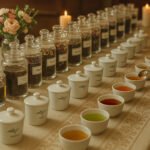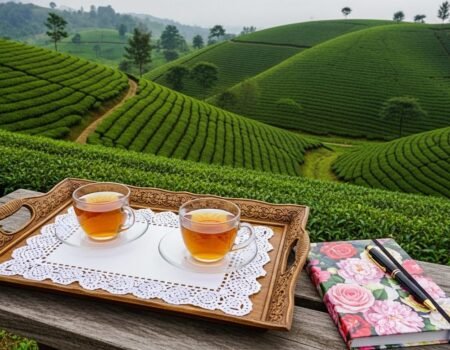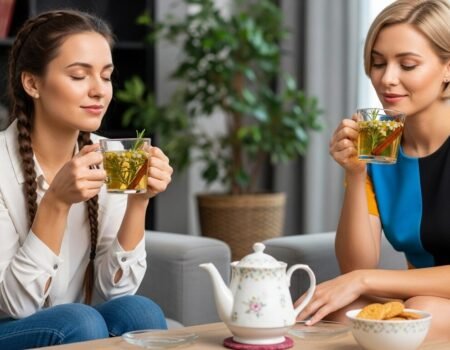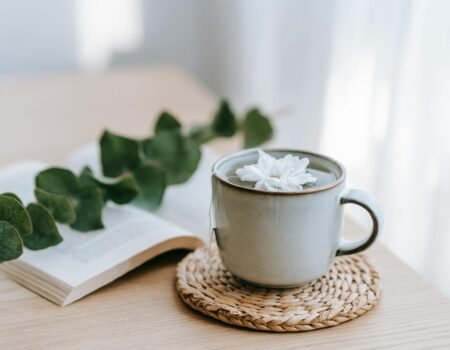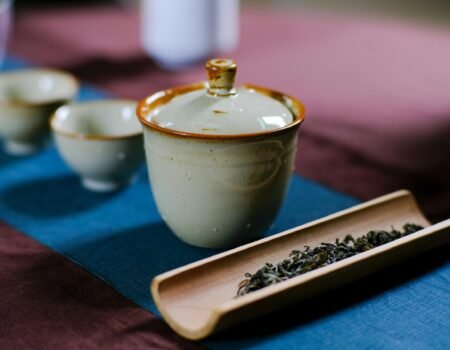
Mastering Tea Tasting Techniques: Taste Tea Like a Pro
Index
Index
Tea tasting involves using all your senses to fully appreciate what’s in your cup. This guide will teach you professional tea tasting techniques that transform your daily ritual into a rich sensory adventure.
Key Takeaways
- Tea tasting uses all your senses, with your nose playing an important role in what you perceive as flavor.
- The slurping technique spreads tea across your entire palate and draws in oxygen to release more flavor compounds.
- Quality teas show uniform leaf size, clear liquor, and complex aromas that change throughout the tasting session.
- Each tea type has distinct profiles – white teas are delicate, green teas are fresh, oolongs vary widely, and black teas offer malty notes.
- A tea’s finish or aftertaste reveals its quality, with premium teas leaving a pleasant, evolving sensation that can last several minutes.
The Sensory Foundations of Tea Evaluation
Tea tasting starts with your senses working together to build a complete flavor picture. Your nose, eyes, and taste buds all play key roles in how you detect and enjoy the subtle notes in each cup.
Understanding Sensory Perception in Tasting
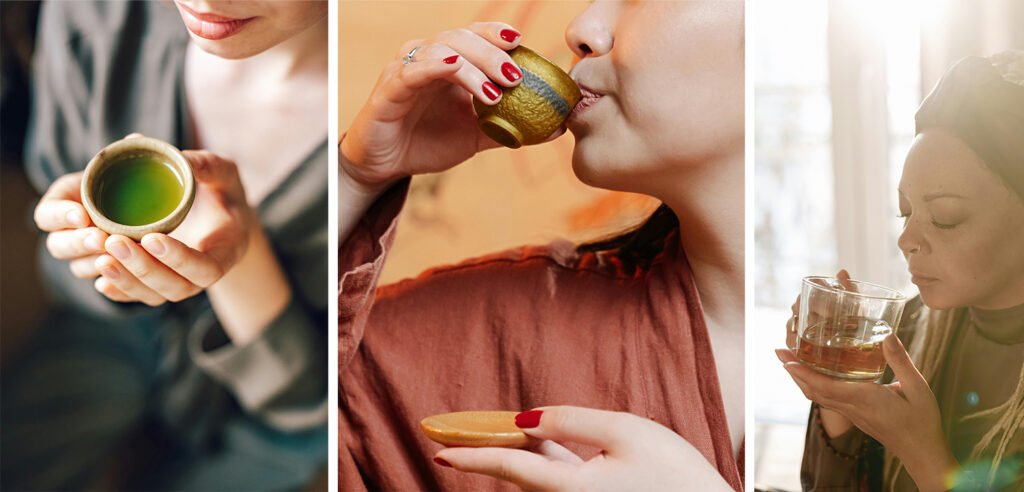
Tea tasting relies on your brain’s ability to process multiple sensory inputs at once. Your nose detects aroma compounds that make up a considerable part of what you perceive as flavor, while your taste buds identify sweet, sour, bitter, and umami notes.
Each person has unique sensory thresholds, which explains why you might notice certain flavors that others miss.
Your brain combines these signals with texture sensations like astringency (that mouth-drying effect from polyphenols reacting with proteins in saliva) and body (the weight of liquid on your tongue).
This sensory network creates a complete flavor profile that changes as you sip. Mastering tea appreciation means training yourself to notice these subtle details rather than rushing through each cup.
The Critical Role of Aroma in Flavor

Aroma forms the backbone of tea’s flavor profile, revealing both character and processing methods through scent alone. Your nose detects far more flavor notes than your taste buds can identify, making smell the secret weapon of professional tea tasters.
The scent of dry leaves provides initial clues about quality, while wet leaf aromas unlock deeper insights into oxidation levels and craftsmanship. Green teas typically offer fresh, grassy scents that match their bright taste, while black teas present sweet, malty notes that complement their robust flavor.
A flavor wheel helps tea drinkers put words to what they smell, turning vague impressions into specific descriptors like “nutty,” “floral,” or “fruity.” To fully experience these aromas, try cupping your hands over the brewing vessel and inhale deeply with your eyes closed.
This technique focuses your senses and blocks distractions. The relationship between what you smell and taste creates the complete sensory picture that makes tea tasting such a rewarding skill to develop.
Visual Assessment: Reading the Tea
Visual clues reveal a tea’s story before you taste a single drop. A skilled tea taster learns to spot quality through leaf appearance, liquor clarity, and color changes during brewing.

Examining the Dry Leaves: Initial Clues
Dry tea leaves reveal crucial quality markers before brewing begins. Expert tasters look for uniform particle size, which signals even compound release during steeping. High-quality teas often display golden or silver buds mixed among the leaves, a sign of careful harvesting and processing.
The presence of stems, however, typically indicates lower quality tea, as stems contain fewer flavor compounds than leaves.
Tea leaves should appear whole and unbroken in most premium varieties, showing the processor’s skill and attention to detail. The color should match what’s expected for that tea type—vibrant greens for fresh green teas or deep browns for fully oxidized black teas.
Next, we’ll explore how these initial observations transform when leaves meet water during the infusion process.
Analyzing Infused (Wet) Leaves: Unveiling Quality
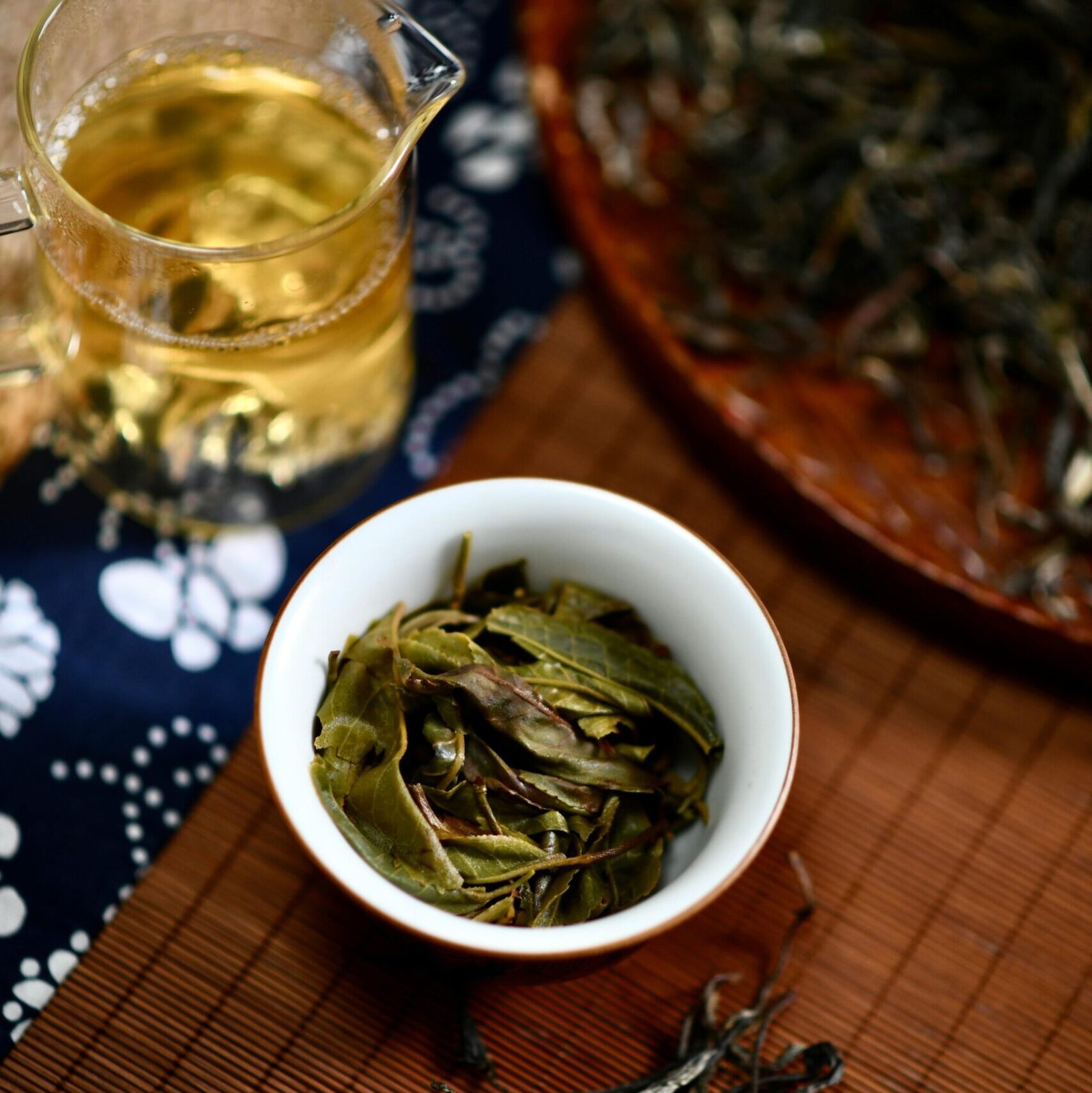
After brewing, tea leaves tell their own story. Examine the wet leaves by spreading them on a white plate to spot key quality markers. Uniform color across the leaves signals even oxidation, a hallmark of careful processing.
You’ll notice that smaller, intact leaves in whole leaf teas typically indicate higher quality.
The wet leaves reveal much about the tea’s journey through processing stages. They offer aromas that match what you’ll taste in your cup. Take a moment to smell these soggy remnants – their scent closely mirrors the brewed tea’s profile.
Quality teas show consistent leaf size and minimal broken pieces. This simple inspection step helps you judge tea quality before your first sip.
Observing the Liquor: Color and Clarity Insights
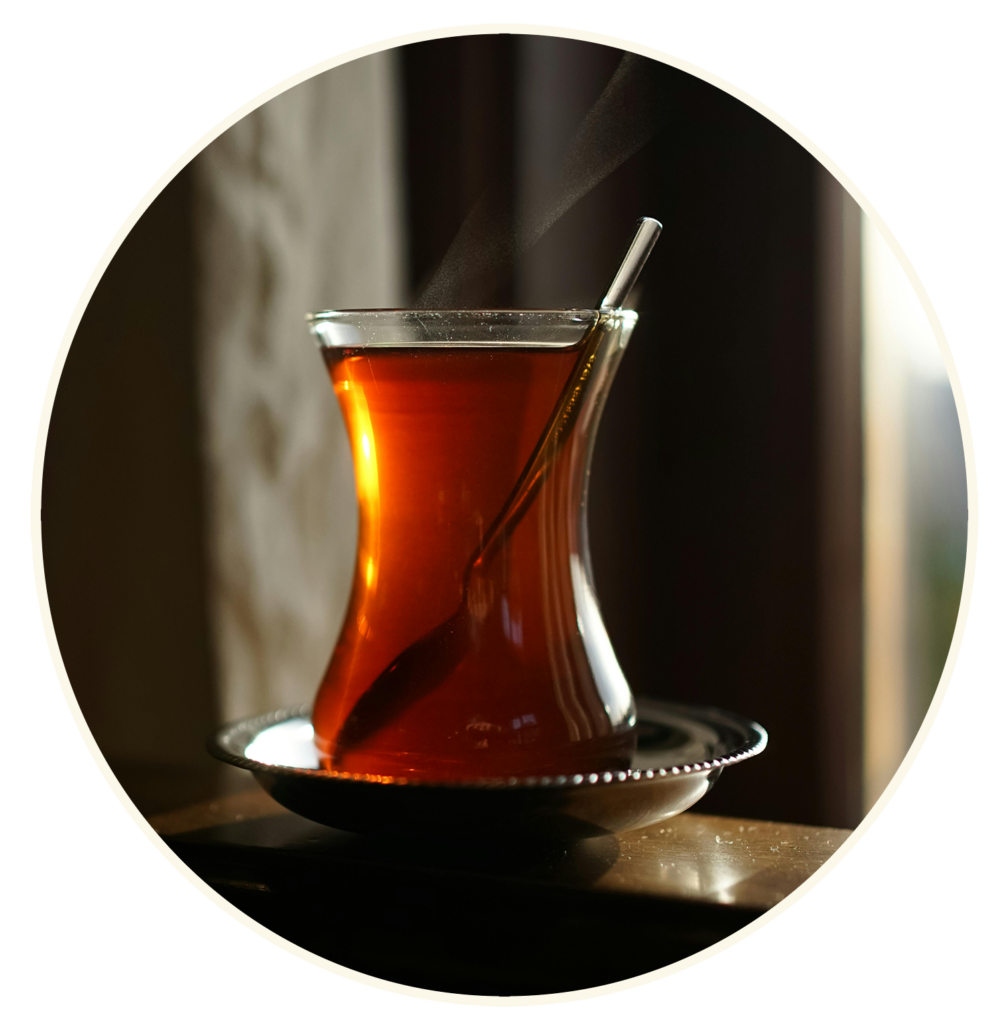
Tea liquor reveals crucial quality signals through its appearance. A bright, clear cup suggests proper processing and handling, while cloudy or murky tea often points to quality issues.
The color itself tells a story about the tea’s strength and character. Deep amber indicates a robust black tea, pale yellow suggests a delicate white tea, and rich olive tones mark a quality green tea.
You can spot oxidation levels by examining color intensity—lightly oxidized teas present lighter hues, while fully oxidized varieties display deeper shades.
Professional tasters hold their cups against light sources to check clarity. This simple test helps identify particles, dust, or other impurities that might affect taste. Quality tea should appear transparent and clean, free from gritty textures or floating debris.
The liquid’s brilliance also hints at freshness and proper brewing techniques. Next, we’ll explore how your nose becomes an essential tool in detecting the complex aromas that define each tea variety.
Olfactory Exploration: The Aromas Unveiled

Your nose leads the way in tea tasting, with scent revealing secrets your taste buds might miss. Tea aromas change from dry leaf to wet leaf to cup, telling a story about origin, processing, and quality.
Techniques for Assessing Tea Aromas
Tea aroma tells us much about quality and character before we take a sip. Proper aroma assessment requires attention to detail and specific techniques that help capture the full sensory experience.
Essential Aroma Techniques
Capturing the Full Scent Profile
- Cup your hands around the vessel to trap aromas and inhale deeply through your nose—this concentrated approach captures the tea’s complete bouquet
- Start with the dry leaf assessment, as these initial aromas often differ significantly from the brewed tea’s scent profile
- Break the tea’s “aroma layer” by gently stirring the liquor before bringing it to your nose, releasing trapped volatile compounds
- Use a spoon to lift some tea closer to your nose, creating a concentrated aroma point for detailed analysis
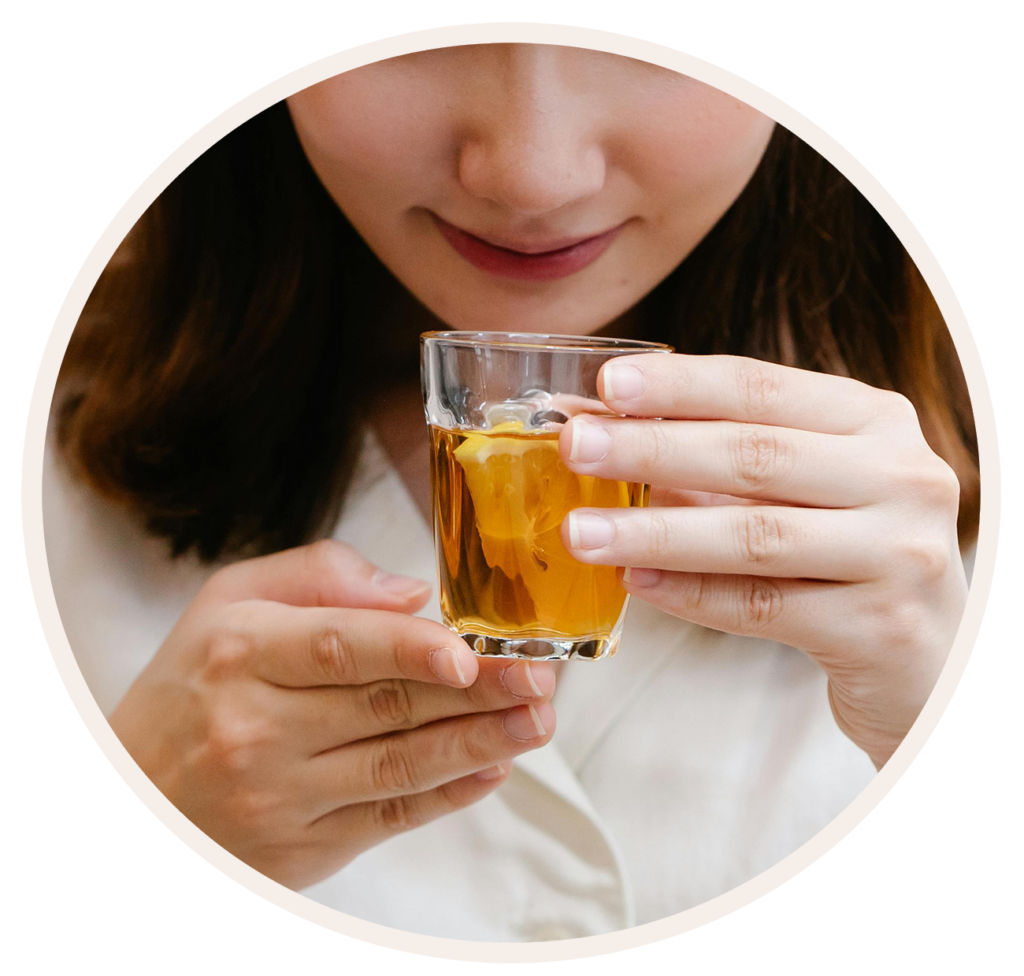
Optimal Smelling Methods
- Take short, quick sniffs rather than one long inhale to prevent sensory fatigue and catch subtle notes you might otherwise miss
- Allow the tea to cool slightly between assessments—different temperature points release varied aromatic compounds
- Breathe through both your mouth and nose simultaneously to engage your retronasal pathway for complete aroma detection
Advanced Scent Analysis
Identifying Aroma Layers
- Identify the progression of scents: top notes (first impressions), middle notes (body of the aroma), and base notes (lingering scents) as they reveal themselves
- Practice naming specific scents using familiar reference points—fruits, flowers, spices, or nuts—to build your aroma vocabulary
- Consider the tea’s processing method while assessing aroma, as oxidation levels greatly impact the resulting scent profiles
- Record your aroma findings before tasting to avoid taste influence on your smell perceptions
Comparative Assessment
Complete Aroma Evaluation
- Compare the aroma of the wet leaves to the liquor itself, noting how they complement or contrast each other
- Smell the empty cup after finishing to evaluate the tea’s lasting aromatic impression or “cup fragrance”—this final assessment reveals the tea’s aromatic persistence
Common Aromatic Descriptors and Their Significance
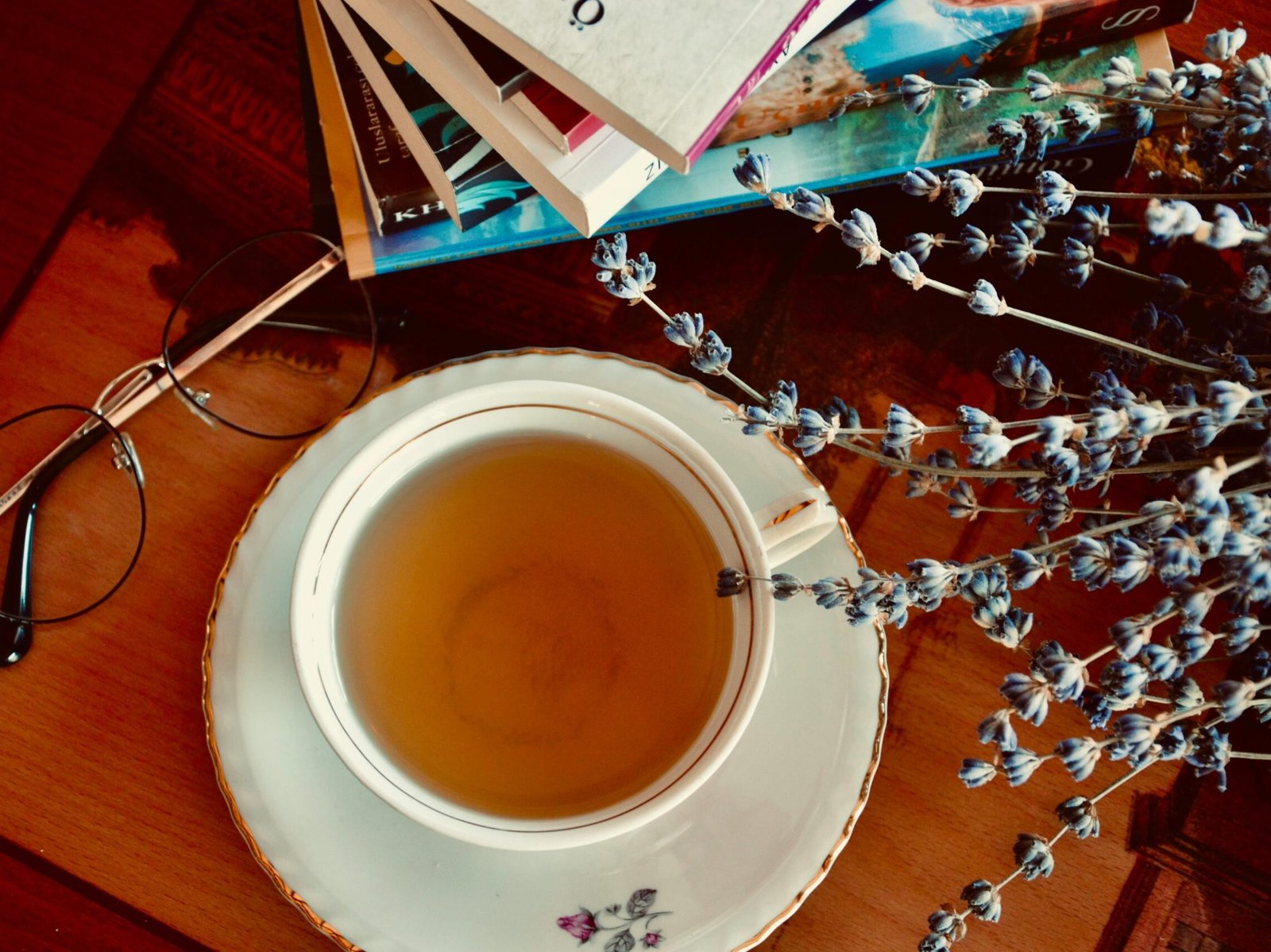
Tea aromas span a rich vocabulary that helps tasters pinpoint specific qualities. Floral notes like jasmine or rose often signal delicate white or green teas, while nutty scents such as almond or chestnut appear in roasted oolongs.
Fruity descriptors range from bright citrus in high-mountain teas to deep stone fruit in certain black varieties. Each aroma offers clues about processing methods, growing conditions, and overall quality.
The significance of these scents extends beyond simple identification. Malty aromas in Assam teas indicate proper oxidation, while grassy notes in Japanese greens suggest freshness and proper steaming.
Smoky hints might reveal traditional firing techniques, and honey-like sweetness often points to careful harvesting of young leaves. Learning these descriptors builds your tasting vocabulary and transforms casual sipping into thoughtful appreciation of the tea’s character and craftsmanship.
The Evolving Nature of Tea Scents
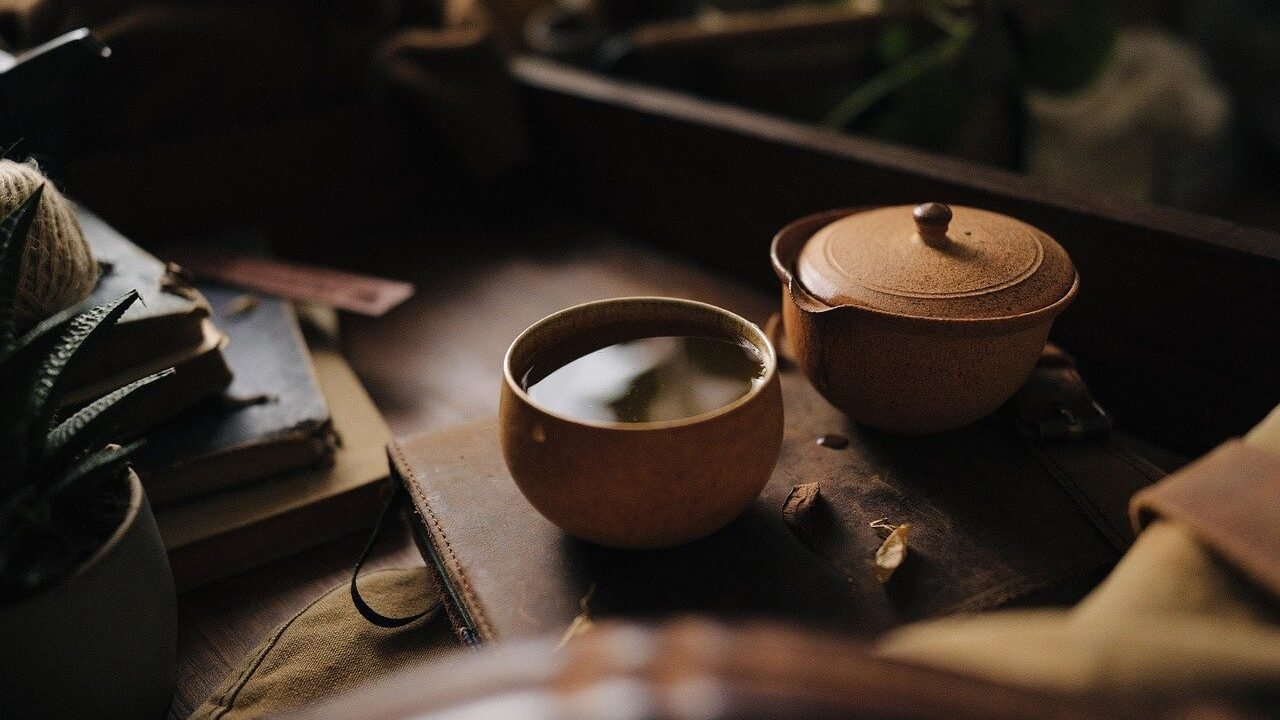
Beyond basic descriptors, tea aromas transform throughout your tasting session. A quality tea reveals its character in stages rather than all at once. The first sniff might capture floral notes in an oolong, but as the leaves steep and cool, nutty or fruity scents emerge.
This layered experience happens because different aromatic compounds release at varying temperatures. Your gaiwan or teapot becomes a tool for tracking these changes – the same leaves might offer completely different scent profiles from the first to third infusion.
Tea’s aromatic journey continues in your cup. Hot tea releases volatile compounds quickly, giving strong but fleeting impressions. As your brew cools, heavier aromatic molecules become more noticeable, creating a complex scent evolution.
This changing nature explains why experts often smell their tea multiple times during a single tasting. The complexity of these evolving scents separates ordinary teas from exceptional ones.
Fine teas display this dynamic quality, with aromas that shift and develop rather than remaining flat or one-dimensional.
Gustatory Analysis: Decoding Flavor and Texture

Gustatory analysis involves the art of tasting tea with your full attention, where you’ll learn to detect subtle flavors, identify key taste elements, and appreciate the physical sensations tea creates in your mouth – continue reading to master the slurping technique that helps aerate the tea across your taste buds for maximum flavor perception.
The Purpose and Technique of Slurping
Slurping tea serves a crucial purpose in professional tasting. This technique distributes tea across your entire palate, allowing all taste receptors to engage with the liquid. Tea experts deliberately make this sound to enhance their perception of flavors and textures.
The process works by drawing in oxygen alongside the tea, which helps release volatile compounds that might otherwise go unnoticed.
To slurp effectively, take a small amount of tea into your mouth and draw it in with a quick intake of air. The goal is to create a fine spray that coats your entire mouth. Silver Needle White Tea demonstrates why this matters – its creamy, viscous texture becomes fully apparent only through proper slurping.
Many beginners feel shy about making noise, but this skill proves essential for anyone serious about understanding a tea’s complete flavor profile.
Identifying Primary Tastes and Complex Flavor Notes
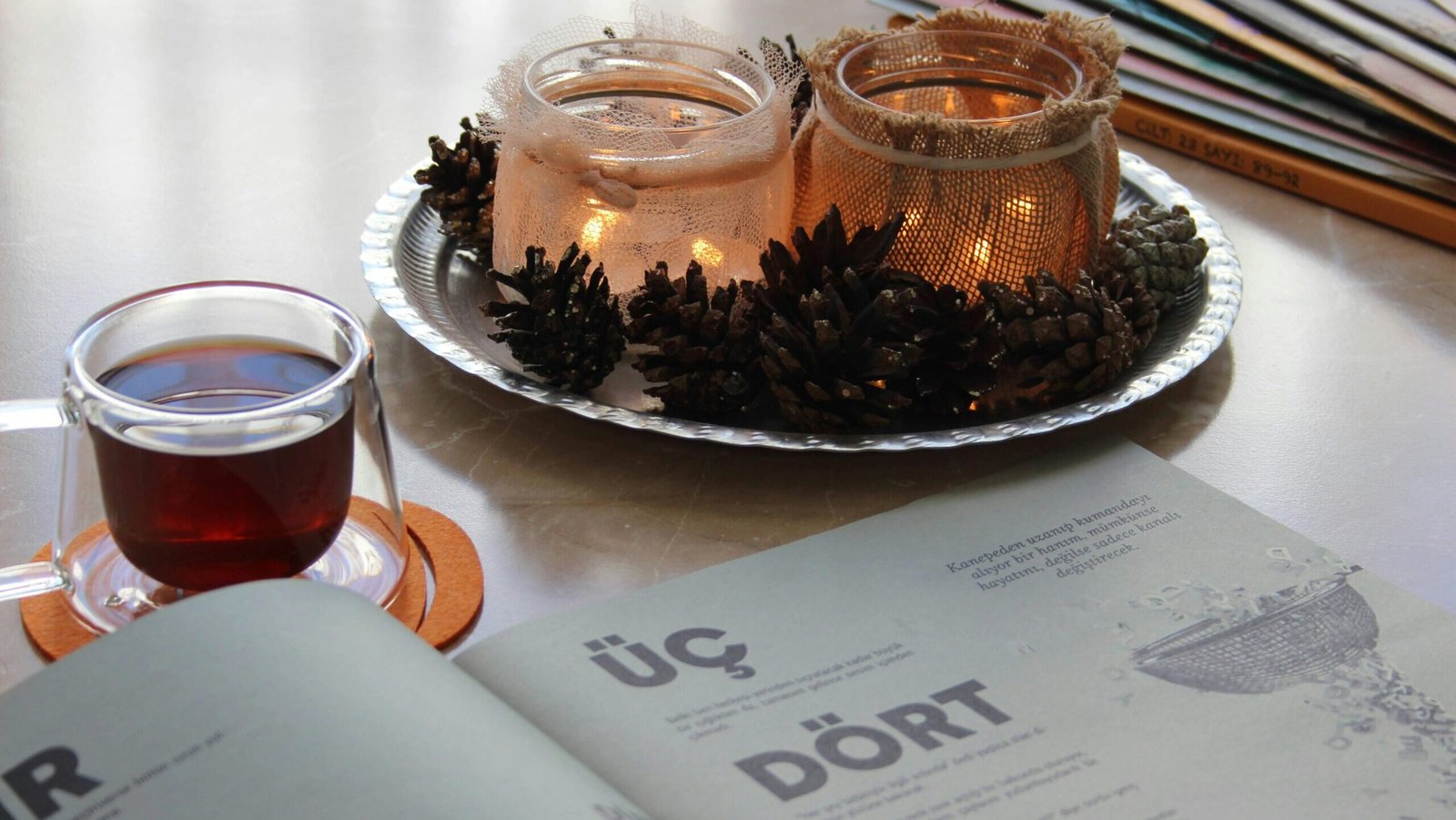
Tea tasting starts with recognizing the four basic tastes: bitter, sweet, salty, and sour. Each tea type presents these tastes in different strengths and combinations. You’ll notice bitter notes often in stronger black teas, while sweetness might appear naturally in white or certain oolong varieties.
The true mark of quality tea lies in its complexity—a balanced range of flavors that unfold as you taste.
Complex flavor notes go beyond basic tastes to include specific sensations like floral, fruity, nutty, or earthy characteristics. A high-quality Nepali Golden Black tea, for instance, offers distinct rosewater and honey aromas that translate into similar flavor notes.
These nuanced flavors create the tea’s unique profile and tell stories about its origin, processing methods, and quality. The texture or mouthfeel of tea provides another dimension to consider as you explore its complete sensory experience.
Understanding Mouthfeel: Texture, Weight, and Body

Mouthfeel refers to how tea physically feels in your mouth – a key aspect of tasting that ranges from light and crisp to thick and luscious. You’ll notice this sensation immediately as the liquid touches your tongue and palate.
Silver Needle White Tea exemplifies exceptional mouthfeel with its creamy, viscous texture that coats the mouth pleasantly. Body describes the tea’s weight and substance, while texture involves specific physical qualities like smoothness, astringency, or velvety sensations.
Poor mouthfeel has been aptly compared to “loud wrapping paper covering an empty box” – all promise but no substance. The mouth-drying effect you might experience comes from the reaction between polyphenols in tea and proteins in your saliva.
This astringency varies greatly across tea types and brewing methods. A quality tea delivers balanced texture that supports its flavor profile rather than overwhelming it, creating a complete sensory experience that engages both taste buds and physical sensations.
The Lingering Impression: Evaluating the Finish

The finish of a tea stays with you long after the last sip, telling a deeper story about its quality. A great tea leaves a clear, sweet aftertaste that changes and develops on your palate, while a lesser tea fades quickly or leaves unwanted drying effects.
Defining and Assessing the Aftertaste
Aftertaste refers to the flavors that stay in your mouth after you swallow tea. Tea experts pay close attention to this lingering sensation because it reveals much about a tea’s quality.
Premium teas offer a long, evolving finish that changes over time, sometimes lasting several minutes. Chinese tea culture uses the term “hui gan” to describe a special refreshing quality that appears in the throat after drinking certain teas.
Assessing aftertaste requires patience and focus on what happens after the tea leaves your mouth. Notice how long flavors persist, whether they change in character, and if they create pleasant sensations like sweetness or cooling effects.
High-quality teas typically provide complex, pleasant aftertastes that don’t fade quickly. Next time you drink tea, try counting how many seconds the flavor lasts to gauge its finish quality.
Characteristics of a Quality Finish
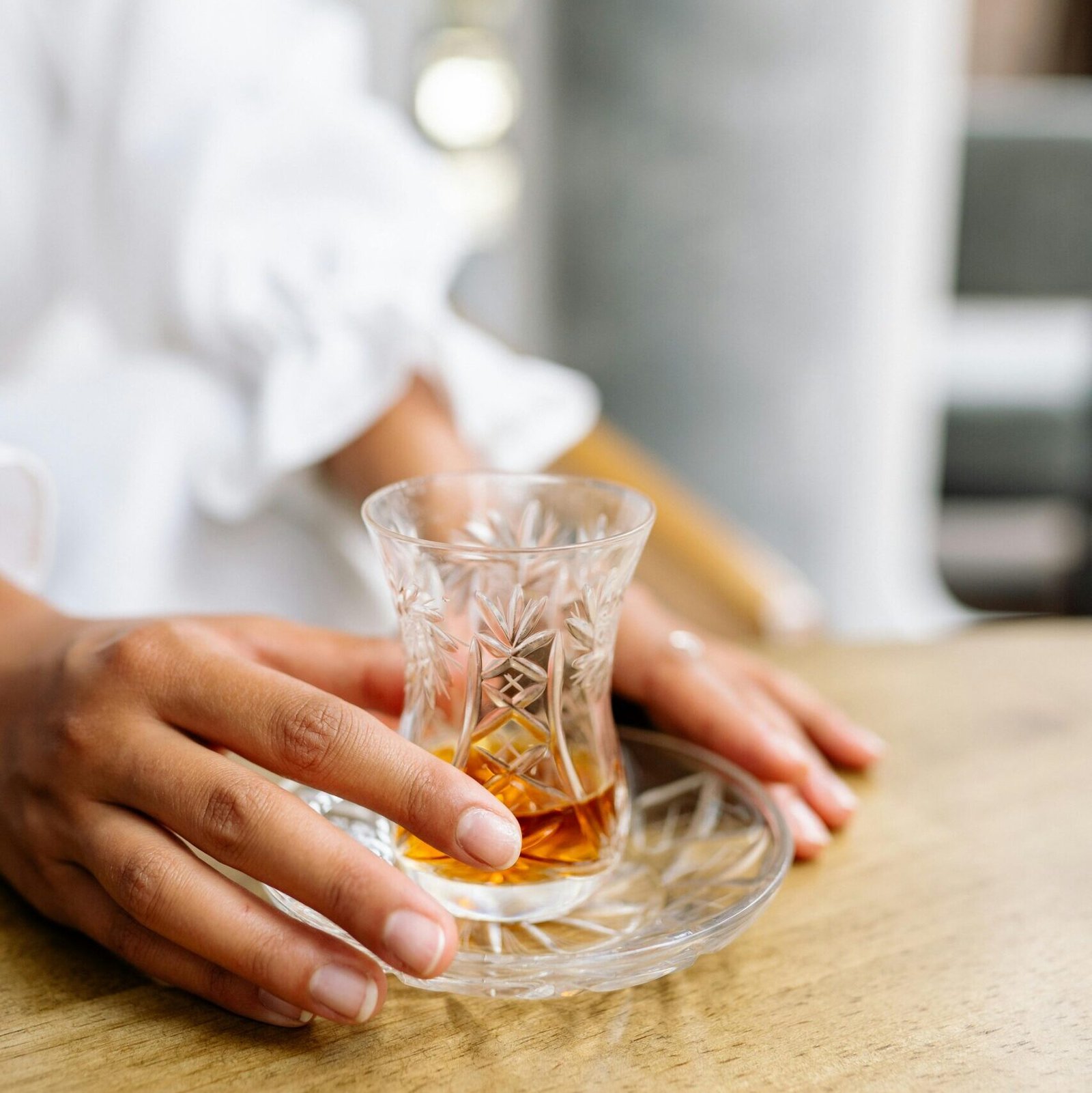
Beyond identifying the aftertaste, tea experts look for specific qualities that mark a superior finish. A quality finish lingers pleasantly on the palate rather than disappearing quickly.
The best teas offer a complex aftertaste that evolves over time, creating layers of flavor that unfold gradually. This complexity enhances the overall tasting experience and distinguishes premium teas from average ones.
High-quality teas typically leave a clean, refreshing quality rather than a harsh or bitter sensation. The finish might range from sweet to savory, but should never feel unpleasantly dry or astringent.
Tea connoisseurs value a balanced mouth-drying effect that comes from natural tannins binding with protein in saliva. This gentle astringency signals quality, especially in oolong and black teas, without overwhelming the palate or masking other flavor notes.
Key Tea Categories and Their Tasting Profiles
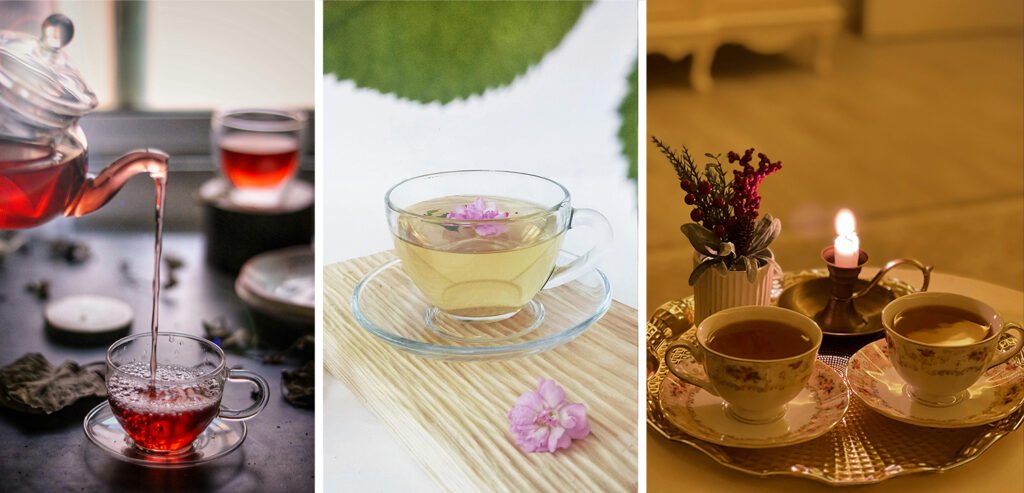
Each tea category offers a distinct flavor profile that tells its own story. Learning to spot these unique traits will help you identify teas by taste alone.
Distinguishing Green and White Teas
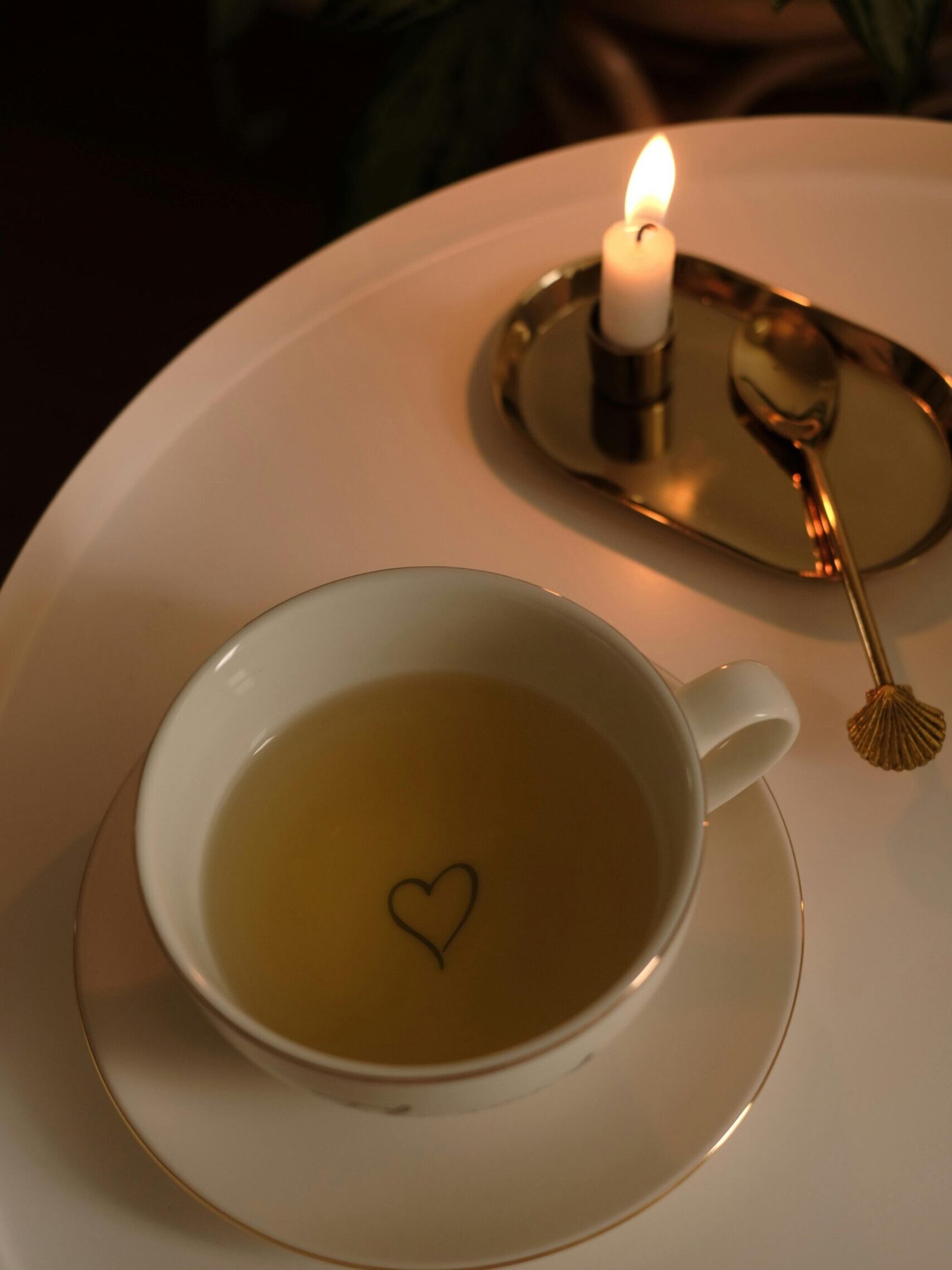
Green tea shows a light green or yellow color in your cup with a mild taste that reflects its processing method. Tea makers create green varieties through steaming or pan-firing the leaves, which stops oxidation and keeps their fresh qualities intact.
China and Japan stand as the major producers, each region adding unique characteristics to their green teas.
White tea offers the most delicate profile among all tea types due to minimal processing. These teas typically come from China’s Fujian province, where skilled producers handle the leaves with extra care.
You’ll notice a clean finish that lingers pleasantly after each sip. The liquor appears pale and clear, while the flavor notes remain subtle yet complex enough for serious tea drinkers to appreciate.
Characterizing Oolong Teas: A Spectrum of Flavors
Oolong teas stand out in the tea world with their remarkable range of flavors. These semi-oxidized teas fall between green and black teas, with oxidation levels varying from 10% to 70%.
This wide oxidation spectrum creates distinct taste profiles that tea lovers can explore. Lightly oxidized oolongs offer fresh, floral notes with fruity hints that dance on your palate.
Heavily oxidized varieties deliver deeper, richer tastes with roasted notes and ripe fruit flavors.
Geography plays a key role in oolong flavor development. High-altitude oolongs typically have richer, more complex flavors and are often lightly to moderately oxidized. The brewing temperature affects how these flavors emerge in your cup.
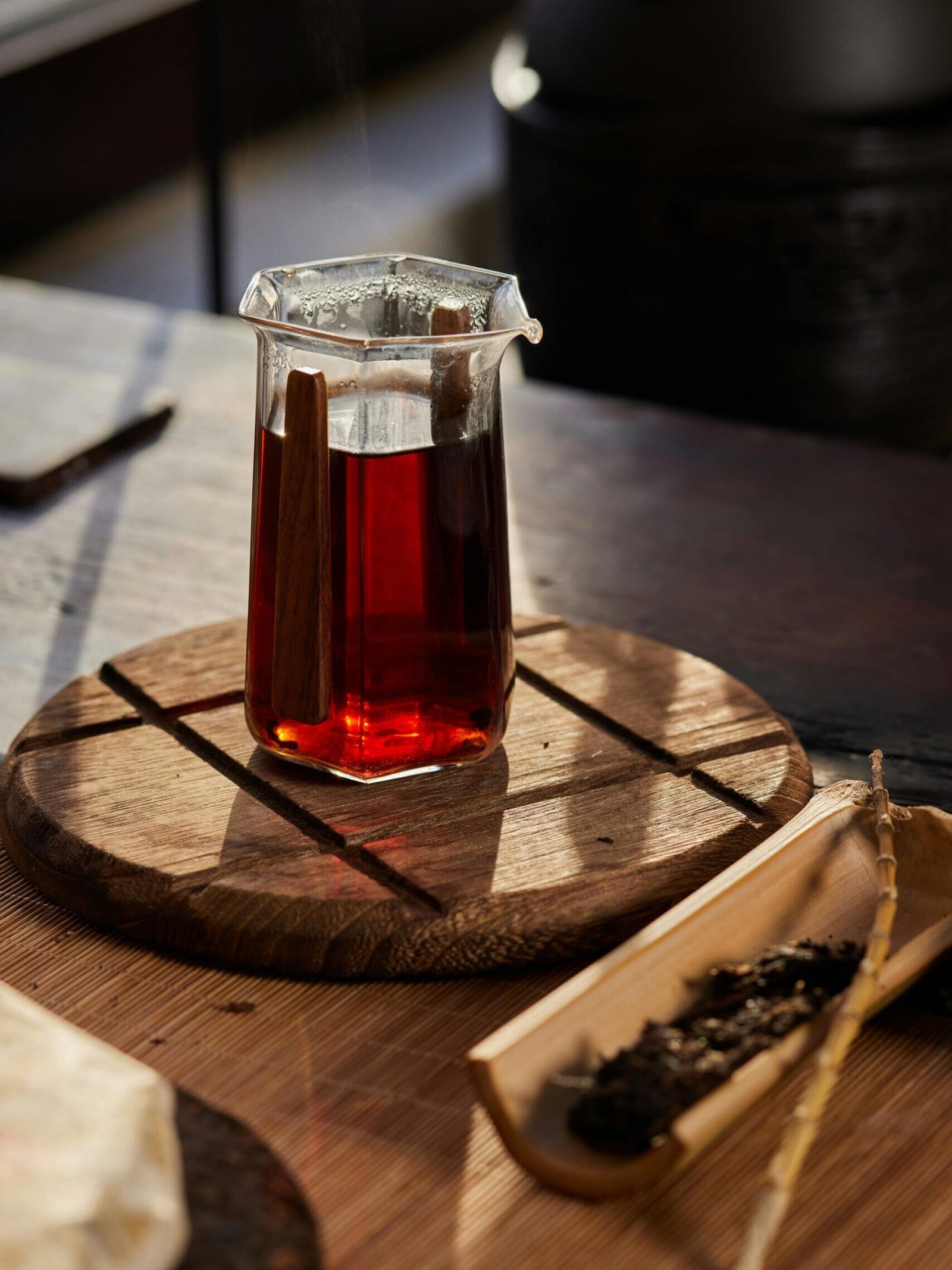
Most oolongs taste best with water between 185°F (85°C) and 205°F (96°C), allowing their unique characteristics to fully develop. Each sip reveals layers of taste that change from the first impression to the lingering finish, making oolong tasting a journey through flavor landscapes.
Profiling Black and Pu-erh Teas
Black teas offer a rich taste experience with sweet, malty notes that often carry hints of chocolate or spice. You’ll notice these distinctive flavors develop fully during proper brewing, creating a bright and clear liquor in your cup.
Many tea lovers compare black tea tasting to wine appreciation because both require attention to subtle flavor shifts. The clarity of the tea reveals its quality, with superior leaves producing a clean, refreshing quality on the palate.
Shou Pu-erh teas stand apart with their earthy, woody character and sometimes musty undertones. These teas create a unique mouth-drying effect that tea experts value highly. High-quality Pu-erh delivers a “hui gan” – a long, evolving aftertaste that lingers pleasantly.
This finish often starts at the back of the tongue and gradually spreads, marking the tea’s exceptional caliber. Grams of tea used and water temperature significantly impact how these complex flavors develop during brewing.
Conclusion

Tea tasting transforms from mystery to skill with practice and attention. Your senses become sharper as you learn to notice leaf shapes, liquor colors, and subtle aromas. Each cup offers a chance to discover new flavors and textures that tell stories about origin and processing.
Personal preference matters most in this process. The true joy of tea comes from both the formal techniques and your own unique experience with each steaming cup.
For an in-depth exploration of the diverse world of teas and their unique tasting profiles, be sure to check out our detailed guide on tea tasting varieties.
FAQs
1. What is tea tasting and why should I learn it?
Tea tasting is a skill that helps you discern the unique flavors and qualities of different types of tea. Learning this art enhances your tea experience and builds your understanding of tea, much like wine tasting does for wine enthusiasts.
2. How do I properly taste tea like a professional?
Pour the tea at the right temperature, then look at the color of the liquid and infused leaf. Next, smell the aroma, take a small sip, and let the tea coat your entire mouth to notice its flavor profile and mouthfeel.
3. What role does smell play in tea tasting?
Your sense of smell is crucial when tasting tea. The aroma reveals many aspects of the tea before you even drink it, offering clues about its freshness, processing method, and flavor notes.
4. Can I use a flavor wheel to help identify tea tastes?
Yes, a flavor wheel is a useful tool that helps beginners name the tastes they detect in a particular tea. It organizes flavors into categories like floral, nutty, or fruity, making it easier to describe your tea’s taste.
5. What makes a good tea versus an average one?
Good tea has a clean, refreshing quality with balanced flavor notes and proper body. It should have no off-tastes and deliver a complete taste experience from the first sip to the finish, with the right amount of pungency for its type.
6. How important is water temperature when brewing tea for tasting?
Water temperature is vital. Using water that’s too hot can burn delicate teas like green or white, while water that’s too cool won’t extract enough flavor from robust teas like black or pu’er tea. Each tea type has an ideal brewing temperature for the best tasting results.
References
- https://pathofcha.com/blogs/all-about-tea/tasting-tea-like-a-pro-a-detailed-guide?srsltid=AfmBOootQypcsbXlrsvCHDd0JvR3DV0jp2K1f5SEdpmWGvuML7Tm9UF5
- https://www.vinhood.com/en/magazine-en/degustare-il-te-come-un-tea-taster-tecniche-e-analisi-sensoriali/
- https://pathofcha.com/blogs/all-about-tea/tasting-tea-like-a-pro-a-detailed-guide?srsltid=AfmBOorJ8Lh4zYto_r0xAd13Xf-Gp5wV4Z6pL_cDFEWCUYXCAiwa6Pen
- https://www.teaformeplease.com/how-to-taste-tea-like-pro/
- https://www.teacupsfull.com/blogs/tea-blog/tea-tasting?srsltid=AfmBOorHIPdlizqNngaLSj8RM8DMkFukHmH05cnyKWKZdH6N090ewDJ4
- https://www.discoveringtea.com/2017/07/28/analyzing-the-wet-leaves/ (2017-07-28)
- https://pathofcha.com/blogs/all-about-tea/tasting-tea-like-a-pro-a-detailed-guide?srsltid=AfmBOoohFu_TuwDh0XfWiitvSuOm8f1fYCKplBt_qsU0zKxKCvwrtdOg
- https://jyyna.co.uk/tea-tasting/
- https://pathofcha.com/blogs/all-about-tea/tasting-tea-like-a-pro-a-detailed-guide?srsltid=AfmBOopAr-0tA069vz451XeNe5BPIN23NznlfqYDanJsf_g7-BsYK6xe
- https://www.alveus.eu/blog/tea-tasting
- https://pathofcha.com/blogs/all-about-tea/tasting-tea-like-a-pro-a-detailed-guide?srsltid=AfmBOoqB_xnN7H9SnuUU-KLwXq_jUqwrqJgA64yNdJ43UBPKEwps2tlr
- https://pathofcha.com/blogs/all-about-tea/tasting-tea-like-a-pro-a-detailed-guide?srsltid=AfmBOorNOlJNW9-Bn1yA5JrK8cw1kLe7QP_k80VPwcsopCTbegN4F5Nv
- https://pathofcha.com/blogs/all-about-tea/what-is-mouthfeel-how-to-properly-taste-tea?srsltid=AfmBOoqFeLUZAkZ-o1IeO1_oCvnShliytWTVRhgk4up5p6vF2aBuRmWF (2021-06-20)
- https://pathofcha.com/blogs/all-about-tea/tasting-tea-like-a-pro-a-detailed-guide?srsltid=AfmBOoo358aS7u4M0Sqetv7qQnIiGmgw0Ea93MeNkw1BgFnExjn5npoi
- https://www.teasetbox.com/complete-guide-to-tea-tasting-mastery/?srsltid=AfmBOoqjwtCdGpPf3x6rqWfgD69EQC90zTmQNu112XhiMwWVQ6HIAX-Y
- https://artfultea.com/blogs/101/types-of-tea-a-comprehensive-guide?srsltid=AfmBOopo5-xCkly9eRax1d1eMCURYkrWoBYLMIGOxcgmOP0enO2a-_b0
- https://iteaworld.com/blogs/guide/how-to-truly-understand-oolong-tea-decoding-the-flavor-profile-of-oolong-tea?srsltid=AfmBOorbvdDtFJMsVgV_ilxQKRfEVRWoz_qNrJrXIK3mPJz7QK24ySIx
- https://pathofcha.com/blogs/all-about-tea/tasting-tea-like-a-pro-a-detailed-guide?srsltid=AfmBOooQ4-MgjDQJJTYyPWVFviQhUUKAbs2vOfV3EKPbjPhhhtoMBYhy



